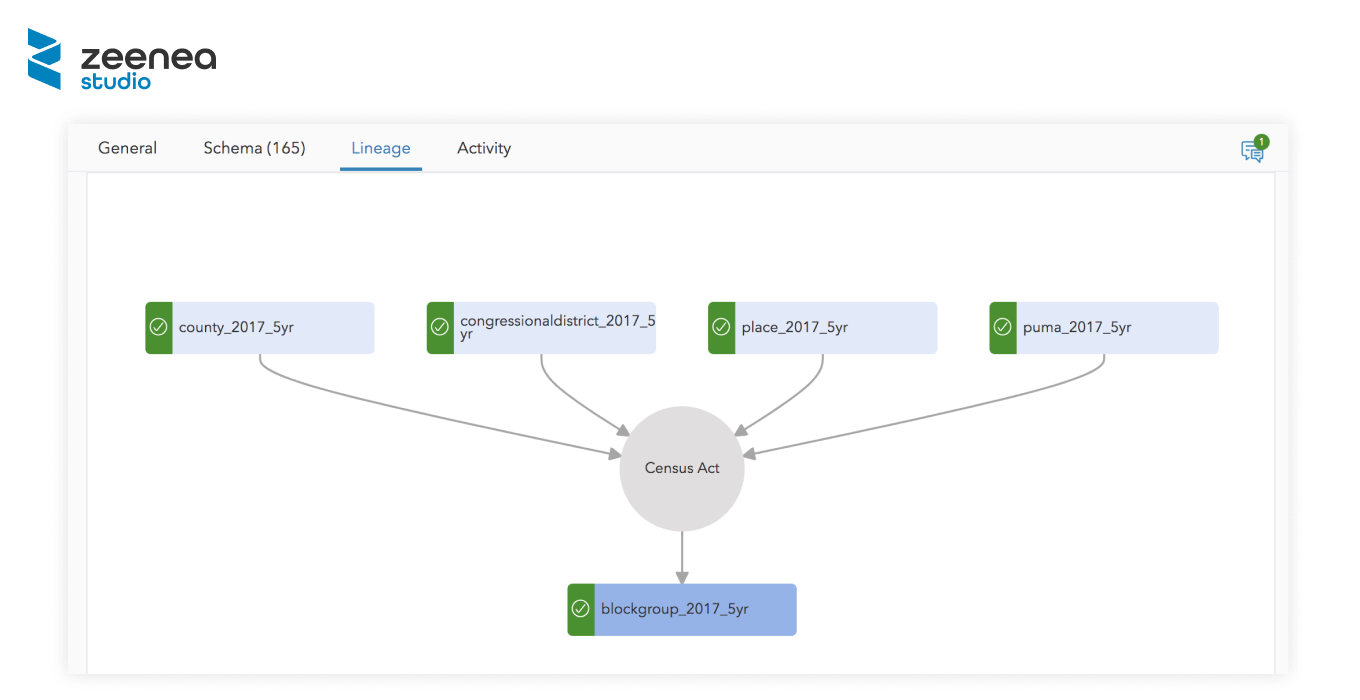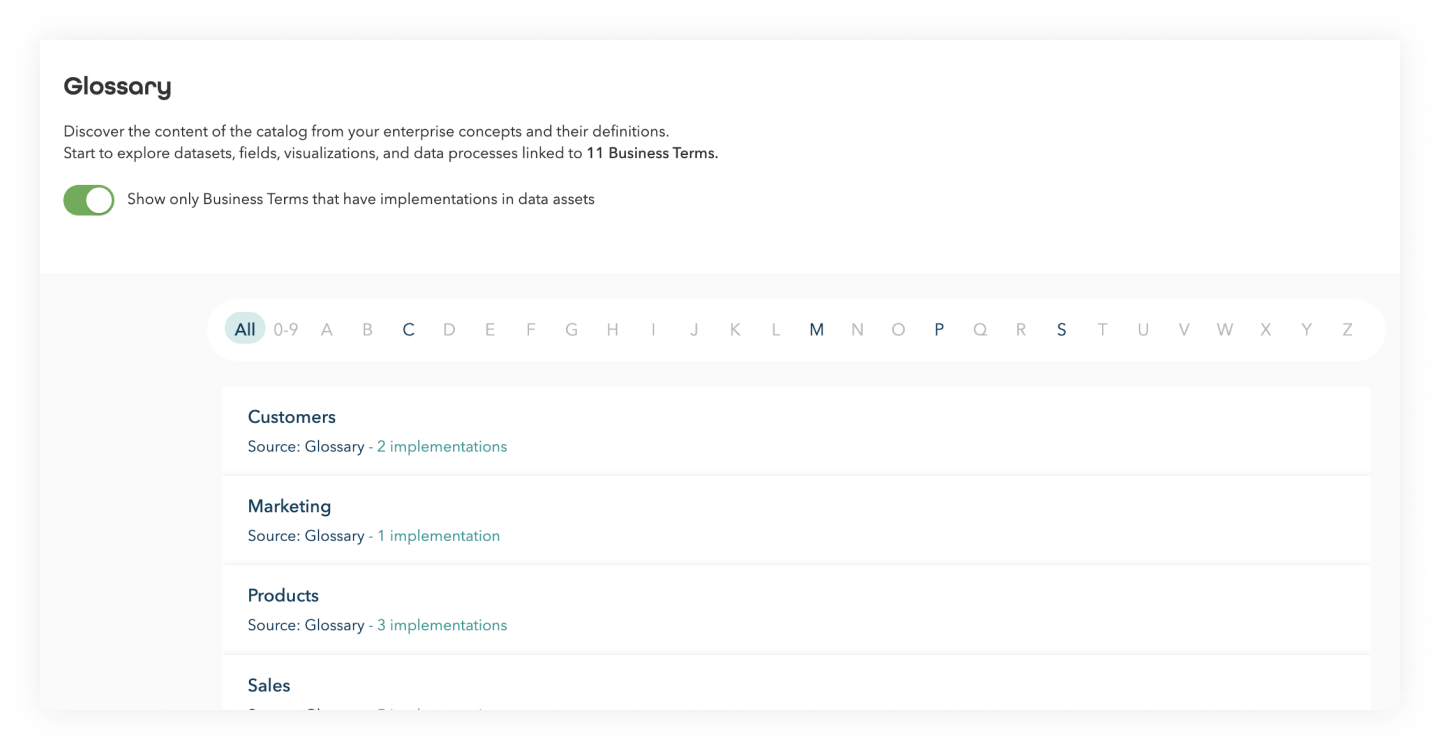It is no secret that the enormous volumes of information that companies generate require the right tools in order to correctly manage them. Indeed, with great data comes great responsibility! For organizations to truly profit off of their data, it is essential to be equipped with a solution that enables data-driven people to easily find, discover, manage, and above all, trust in their information assets.
And this, with a data catalog! Created to unify all enterprise data, a data catalog enables data managers and data users to improve productivity and efficiency when working with their data.
In fact, in 2017, Gartner declared data catalogs as “the new black in data management and analytics”. In “Augmented Data Catalogs: Now an Enterprise Must-Have for Data and Analytics Leaders” they state:
“The demand for data catalogs is soaring as organizations continue to struggle with finding, inventorying and analyzing vastly distributed and diverse data assets.”
In this article, we will share everything there is to know about data catalogs for companies seeking to truly become data-driven.
What exactly is a data catalog?
Before getting into the subject of data cataloging, it is important to understand the concept of metadata management. A data catalog uses metadata – data on data – to create a searchable repository of all enterprise information assets. This metadata collected by various data sources (Big Data, Cloud services, Excel sheets, etc.) is automatically scanned to enable users of the catalog to search for their data and get information such as the availability, freshness, and quality of a data asset.
Therefore, by definition, a data catalog has become a standard for efficient metadata management. At Zeenea, we broadly define a data catalog as being:
“A detailed inventory of all data assets in an organization and their metadata, designed to help data professionals quickly find the most appropriate data for any analytical business purpose.”
What is the purpose of a data catalog?
Topics on data are still considered to be an extremely technical domain. However, data innovation is only possible if it is shared by as many people as possible. This is the very purpose of a data catalog: to democratize data access.
A data catalog is meant to serve different people or end-users. All of these end-users – data analysts, data stewards, data scientists, business analysts, and so much more – have different expectations, needs, profiles, and ways to understand data. As more and more people are using and working with data, a data catalog must adapt to all end-users. In fact, data catalogs don’t require technical expertise to search for, discover, and understand a company’s data landscape.
What are the benefits of a data catalog?
As mentioned above, a data catalog centralizes and unifies the metadata collected so that it can be shared with IT teams and business functions. This unified view of data allows organizations to:
Accelerate data discovery
As thousands of datasets and assets are being created each day, enterprises find themselves struggling to understand and gain insights from their information to create value. Many recent surveys still state that data science teams spend 80% of their time preparing and tidying their data instead of analyzing and reporting it. By deploying a data catalog, the speed of data discovery can increase up to 5 times. This way, data teams can focus on what’s important: delivering their data projects on time.
Sustain a data culture
Just like organizational or corporate culture, data culture refers to a workplace environment where decisions are made through emphatic and empirical data proof. A data catalog allows for data knowledge to no longer be limited to a group of experts: it enables organizations to better collaborate on their information assets.
Build Agile Data Governance
Instead of deploying overly complex processes too difficult to maintain on assumed information, data catalogs enable a bottom-up, agile data governance approach. A data catalog enables data users to create a data process registry, document legal obligations, track the lifecycle of data, as well as identify sensitive information. All this is in a single centralized repository.
Maximize the value of data
By collecting all the data of an enterprise on a reference data tool, it becomes possible to cross-reference these assets and get value from them more easily. The collaboration of technical and professional teams within the data catalog enables innovations that meet proven market needs.
Produce better and faster
More than 70% of the dedicated time to data analysis is invested in “data quarrels” activities. Cataloging simplifies data retrieval, the identification of associated contacts, and therefore, data-driven decision-making.
Ensure good control over data
Misinterpreted or erroneous, enterprises expose themselves to the risk of basing their decision on incorrect information. Connected data catalogs permit access to always up-to-date data. Data users can ensure that data and their information are correct and usable.
What are a data catalog’s key features to look out for?
A flexible & adaptable metamodel template
A data catalog should automatically capture and update metadata from an enterprise’s data sources. Through a flexible metamodel template, it should be possible to add, configure – at the hand of the data catalog’s administrator – and overlay documentation properties on cataloged datasets. Via this approach, the catalog offers a simple and modular way to configure documentation templates according to the enterprise’s objectives and priorities.

A smart search engine
One of the core features of a data catalog is a search engine. All indexed metadata should be searchable via a search bar. Through simple keyword searches, a data catalog should be able to show the most accurate results to a query. It should also enable users to filter their search results. A smart search engine also optimized results based on the user’s profile and preferences. A smart search engine thus, enables users to be able to quickly find their information assets.

A knowledge graph
The presence of a knowledge graph is essential to any data cataloging project. The knowledge graph is what represents different concepts and what links objects together through semantic or static links. A data catalog’s knowledge graph, therefore, provides users with rich and in-depth search results, optimized data discovery, smart recommendations, and more.

Data lineage
With data lineage, it is possible to visualize in whole the origin and the transformations of one specific data over time. This allows users to understand where the data originate from, when and where they separate and fuse with other data. These transformations and treatments carried out by the data are indispensable for conforming to the GDPR and other data regulations.

A Business Glossary
A business glossary enables data consumers to manage a common business vocabulary and make it available across the entire organization. This must-have feature provides a clear meaning and context to data terms.

What are a Data Catalog’s use cases? And for whom?
For Chief Data Officers
The Chief Data Officer plays a key role in the overall data strategy of an enterprise; their purpose is to master their data and facilitate their access in order to become data-driven. A data catalog helps them:
- Ensure data reliability and value
- Create a data literate organization
- Valorize a data set’s context for data explorers
- Evangelize a data culture with rights and duties
- Start a compliance process with the European regulation (GDPR).
For Data Stewards
Known as the main contact for data inquiries thanks to their technical and operational knowledge, the Data Steward is most commonly nicknamed the “Master of data”! A data catalog enables data stewards to:
- Centralize data knowledge in a single platform
- Enrich data documentation
- Establish communication between them and data explorers
- Qualify the value of data.
For Data Scientists
To achieve their missions, end-users must be able to quickly find, discover, and understand the right data asset for their use-cases. A data catalog helps them:
- Easily find data through a search engine
- View the history of their information: date of creation and the actions carried out on it
- Understand the context of their data
- Identify the associated people
- Easily collaborate with peers.
A representative data catalog journey
A data catalog becomes extremely handy in the different phases of your projects:
A data catalog in the deployment phase
Connect to your data sources – A data catalog plugs into all your data sources. Connect your data integration, data preparation, data visualization, CRM solutions, etc in order to fully integrate all your technologies into a single source of truth.
A data catalog in the documentation phase
Create a metamodel – A data catalog captures and updates technical and operational metadata from an enterprise’s data sources. It allows you to add and configure – at the hand of the data catalog’s administrator – or overlay information (information that can be mandatory or not) on its cataloged datasets.
A data catalog in the discovery phase
Understand your data – With a data catalog, data citizens – with technical capabilities or not – are able to fully understand their enterprise data. A data catalog allows users to have access to and easily search for any information within the catalog.
Define your data – A data catalog allows data leaders, such as data stewards or chief data officers, to correctly define the pertinent data to be used. Through metadata, data managers can easily document their datasets, allowing their data teams to access contextualized data.
Explore your data – Discover and collect available data in a data catalog. By cataloging all enterprise data in a central repository, data citizens are able to ensure that their data is reliable and usable.
A data catalog in the collaboration phase
Communicate with data – A data catalog allows users to become data fluent. Both the IT & business departments are able to understand and communicate around different data projects. Through collaborative features such as discussions, data becomes a topic for all to share across the enterprise.
Start your cataloging journey with Zeenea
Zeenea is a 100% cloud-based solution, available anywhere in the world with just a few clicks. By choosing Zeenea, you give your data teams the best next-generation environment to find, understand and use your data assets.
Check out our two applications:
- Zeenea Studio – enable your data management teams to manage, maintain and enrich the documentation of their company’s data assets.
- Zeenea Explorer – provide your data teams with a user-friendly interface and customized exploration paths to make their data discovery more efficient.
For a product demo or for more information on our data catalog:








